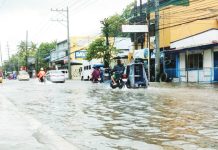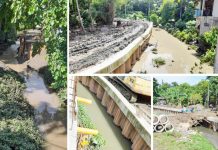BACOLOD City – The red-striped soft scale insect (RSSI) infestation in sugarcane farms across the Visayas has escalated to alarming levels, affecting 255 hectares and 294 farmers as of June 2, data from the Sugar Regulatory Administration (SRA) revealed.
The RSSI was first detected in northern Negros Occidental at the end of March and was declared an infestation on May 22, when it had already spread across 87 hectares. By May 26, affected areas grew to 191 hectares, and just two days later, the number surged to 255 hectares. As of May 30, SRA reported that infested areas had nearly doubled again to 424.82 hectares — a fourfold increase in just over a week.
The hardest-hit province is Negros Occidental, the country’s top sugar producer, accounting for over 60% of national output.
The affected farmers were from cities of Bago, La Carlota, Bacolod, Silay, Victorias, Cadiz, and Sagay, and towns such as La Castellana, Murcia, E.B. Magalona, Manapla, Toboso, and Calatrava. Other impacted locations include Mabinay in Negros Oriental, Anilao in Iloilo, and Sigma in Capiz.
Among the localities, Bago City reported the highest number of affected farmers at 98, with 124.76 hectares of sugarcane land damaged.
SRA Administrator Pablo Luis Azcona described the infestation as “alarming” and called for emergency powers to allow immediate response, including emergency pesticide procurement and strict quarantine measures.
The SRA has already coordinated with the Department of Agriculture (DA), Bureau of Plant Industry (BPI), the Negros Occidental Provincial Government, and local government units to control the spread.
“RSSI was first observed in Luzon in 2022 and contained by SRA and DA in 2024. It is surprising how it reached Negros where 65 percent of the industry is based,” Azcona said.
He urged the DA and BPI to disallow the entry of planting materials without SRA or DA certification to prevent further spread.
SRA deputy administrator Atty. Ignacio Santillana said they are ready to tap into an initial P1.5 million for pesticide procurement, but emphasized that policy approval is needed for emergency purchases.
“Given the rate of spread, this situation qualifies as an emergency,” he stressed.
Due to limited field personnel, SRA believes the actual extent of the infestation could be larger than reported. The agency is appealing for support from LGU agriculturists and is considering drone spraying for hard-to-reach areas, which can cover up to 50 hectares per day.
Moreover, Agriculture Secretary Francisco Tiu Laurel Jr., who visited Bacolod City on June 5, personally inspected affected sugarcane areas after attending the launch of the P20 per kilo rice program. He confirmed that the DA has allocated P10 million to help the SRA contain the infestation.
“After this event, pupunta ako sa mga sugarlands na may RSSI, para ako mismo makakita sa mga ‘yan, at mabigay ang kailangan pang suporta mula sa national government para sa mga farmers,” said Tiu Laurel.
The Agriculture chief acknowledged challenges in enforcing quarantine measures due to the country’s extensive coastlines.
“Madali lang kasi malusutan dahil sa airport at seaport lang kami technically may control permits. Unfortunately, we have so many islands and coastline but we are trying to crack down because it is illegal,” he added.
As the infestation continues to spread, the sugar industry, particularly in Negros Occidental, is on high alert. The SRA, along with national and local agencies, is racing against time to contain the pest and support affected farmers before further economic damage sets in./PN







